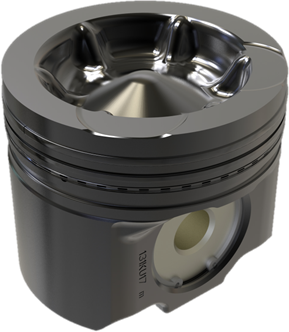Volvo tractor-trailer demonstrator achieves SuperTruck goals
19 September 2016
Volvo Trucks North America unveiled a SuperTruck tractor-trailer demonstrator vehicle that achieved a freight efficiency improvement of 88% and fuel efficiency in excess of 12 mpg. These results make Volvo the third SuperTruck participant (following Cummins and Daimler) that met or exceeded the SuperTruck program goals.
The Volvo SuperTruck concept vehicle—powered by a 425 hp, 11-liter proprietary engine—boosted fuel efficiency by 70%, exceeding 12 mpg, with some test runs showing more than 13 mpg, said Volvo. The powertrain brake thermal efficiency (BTE) reached 50%. These efficiency gains can be put into perspective when compared with a base 2009 model Volvo truck that averaged 7 mpg.
The SuperTruck program was a five-year research and development initiative by the US Department of Energy (DOE) to improve the energy efficiency of Class 8 trucks. The SuperTruck program goals were: (1) to increase the freight efficiency by 50% compared to a 2009 model truck baseline (which was 99 ton-miles of cargo carried per 1 gallon of fuel) and (2) to achieve a BTE of 50%. The US DOE recently announced funding for the second phase of the program, SuperTruck II, that aims to at least double the freight efficiency of Class 8 trucks compared to the 2009 baseline and to reach a 55% BTE.
Volvo’s aerodynamic SuperTruck has a shorter front end than conventional trucks on the road today, and the hood has a sharper downward slope. Lightweight fairings run the length of the tractor and trailer, and cameras have replaced rearview mirrors. Its redesigned chassis is made almost entirely of aluminum, which halved the chassis weight and contributed to an overall tractor-trailer weight reduction of 3,200 pounds. Carbon fiber materials were evaluated, but were not used in the SuperTruck vehicle.
An enhanced version of Volvo’s I-See—a new feature that memorizes the traveled routes and uses that knowledge to optimize cruise speed and keep the I-shift automated manual transmission in the most fuel-efficient gear possible—was an integral part of the fuel efficiency gains seen during SuperTruck on-road testing, said Volvo.
A key part of the overall efficiency gain is the downsized 11-liter Volvo engine, featuring advanced fuel injection, cooling, oil and turbocharging systems, as well as new “wave” pistons and turbo-compounding. The SuperTruck powertrain also includes a Rankine waste heat recovery (WHR) system, which converts heat normally wasted in exhaust into torque.

While not every technology demonstrated in the Volvo SuperTruck will be commercialized, three of the engine advancements developed through SuperTruck research—the wave piston, turbo compounding and common rail fuel injection—are already featured in Volvo Trucks’ 2017 engine line-up. Likewise, a number of SuperTruck-derived aerodynamic improvements—like flared chassis fairings improving air flow around the drive wheels, a redesigned bumper and turbulence-reducing deflectors—can be found on today’s Volvo VNL tractors.
Source: Volvo Trucks North America